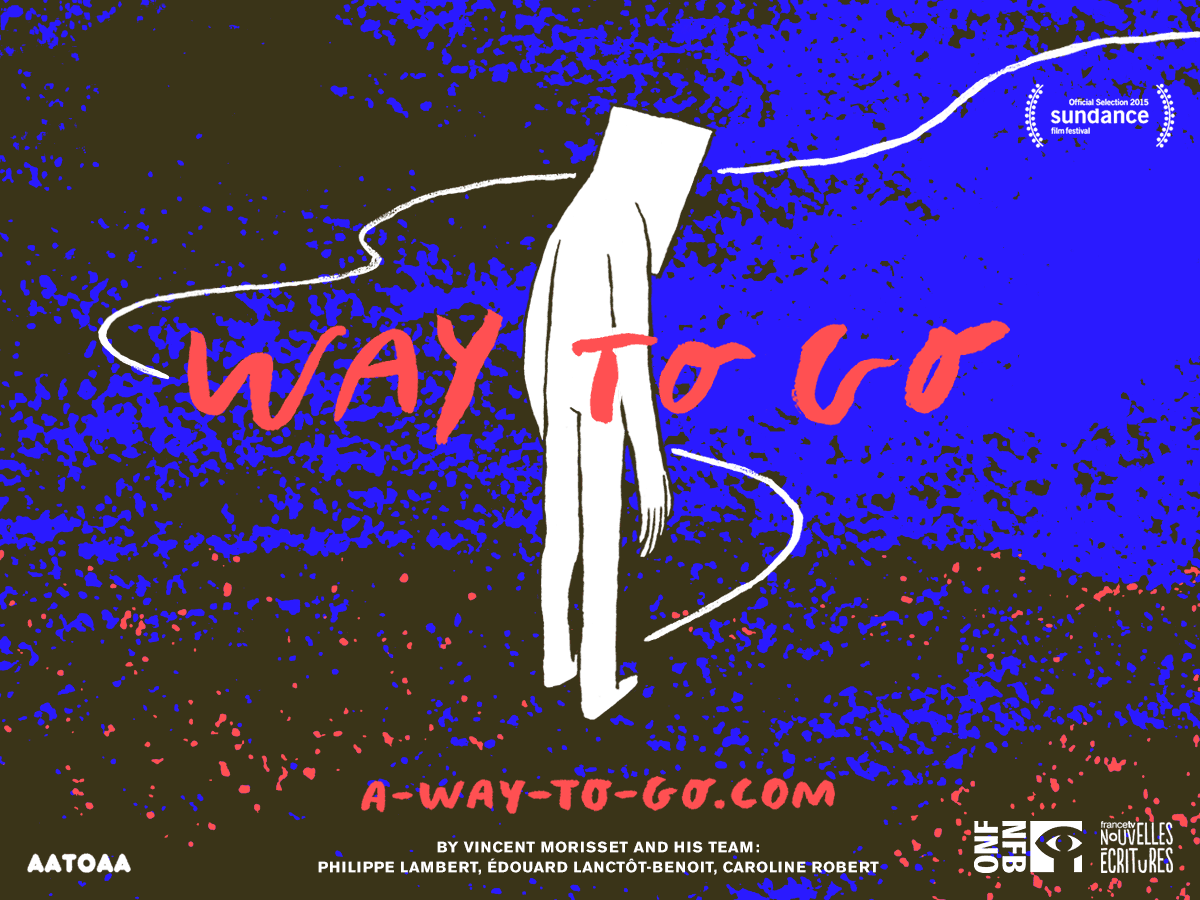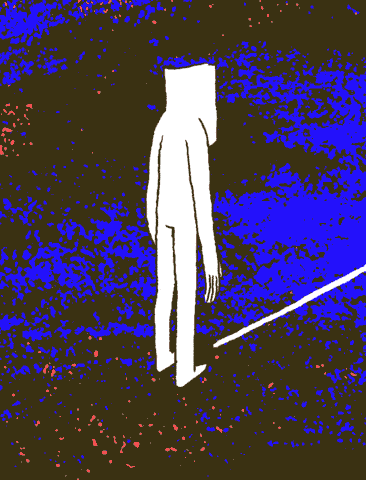Vincent Morisset's 'Way to Go' Gives Interactive Some Feeling
Unit 9's Vincent Morisset has managed to create a poetic and thoughtful digital experience that, when engaged, has the ability to hit you right in the feels. We were fascinated by the piece so sat down with Vincent for a chat.

We've all played with 'interactive' experiences – be it 'choose your adventure' clickable videos, mini-movies that nab your Facebook photos and pop them in scene or 360-degree rotate-a-thons that give us an overview of an action. However, few actually manage to make us feel something, other than a bit of jolly humour or frustration when the mis-timed click sends you to oblivion. Thankfully, with 'Way To Go', Vincent Morisset (creator of pioneering interactive videos for Arcade Fire) and his studio AATOAA have managed to create a poetic and thoughtful digital 'experience' (for want of a better word) that, when engaged, has the ability to hit you right in the feels.
Combining hand-made animation, 360-degree video capture and music with a walking simulator, 'Way to Go' is a free-to-play dream-world of journeys. As the site playfully expresses "Walk, run, fly; crouch in the grass and remember what's hidden all around. Slip like a rumour from one place into another; chase your shadow; listen to the slow pulse of the metronome, black-clad, following in your wake."
Produced by the National Film Board of Canada, co-produced by France Televisions and with a mesmerizing soundtrack by Philippe Lambert, Morisset's vision is both a delightful game-without-a-goal and a welcome moment of solace on the net. We were fascinated by the piece, the technology behind it and the team's purpose in creating their world, so sat down with Vincent for a chat.

How did the 'Way To Go' project come about?
Four years ago Caroline Robert, Édouard Lanctôt-Benoit, Philippe Lambert and I had the chance to create a personal project with the support of the National Film Board of Canada. The project was BLA BLA (blabla.nfb.ca). After that incredible experience, we wanted to continue the experimentation and reflection on the interactive medium. I proposed to Hugues Sweeney, the head of the NFB's digital studio in Montreal, a project that would explore the idea that how we move and look change our perspective on our environment. This super simple and universal premise became the starting point of three years of research and production.
You've worked in interactive digital storytelling before and had great success. Is it easier each time to figure out how the structure the piece, or does each story offer a new challenge?
It's always difficult. We set the bar higher each time. I think we mature and get better at what we do, but we continuously try to create projects with more finesse and nuances.

With projects like this, does technology lead the story, or does the story dictate what is needed from the technology?
The technology is part of the process at the very beginning, but it's not the only driving force. As a small team of four, we started all together from day one and sculpted the project together. Way to Go is an open proposition. I would say all spectators are invited to interpret the experience/narrative as they like. What I wanted to explore was more a feeling than a story. It's something intangible that only interactive experience can achieve. That mix of cinematic grammar and videogame controls opened this unique emotional window for the spectator.
How storyboarded is the narrative? Did you know exactly which points would trigger interactivity whilst shooting it, or was that constructed later on?
It was really iterative. We put a lot of energy into keeping the proposition open to interpretation but also built a progression through contrasts. I also wanted an experience that is layered so a five-year-old can dig it but a middle-aged person will also find some poetry in it… The forest seemed like a universal canvas that anyone could relate to.

Where did the character design come from?
Caroline Robert designed a character on which we can project our own emotions. Its design is minimalist, the hand-made drawn animation is imperfect and fragile. It gives him a presence. In a way, he is the extension of our sight.
How was the main (pathway) film shot? Did you have your own mini-Google-Streetview van?
At the moment, almost all the VR film experience is static or shot by a panning camera on a vehicle. We are in the middle of a forest, on a narrow path. We used a GoPro rig on a pole stabilized by a gyroscope. I held it in my hands as I walked. The black character holding a metronome is me :) Since it's a 360-degree experience, we couldn't hide. I needed to see what I was shooting, so I decided that I would include the Guide character. I'm a protagonist, the cameraman and director at the same time…

We noticed little things (such as the little camera shake when the protagonist hit the ground after jumping, the loop-the-loops in the air) that enhance the experience. How important is it for you to include these touches?
Yes, there are a lot of those... If you stop, some flies may start flying around your head; more than 100 vignettes can be discovered. These details give life to the environment and the character. This is what makes you forget you control a bunch of digital assets through code (more than 200,000 lines of code…). Édouard, my developer, is a magician.
The music and visuals work together perfectly and are vital to the experience. Is it a different process to normal filmmaking to achieve such synergy whilst maintaining interactivity?
The music and visuals are the leitmotiv in the experience. The musical score imagined by Philippe Lambert is constructed dynamically with the pace of your walk. We pushed the web audio API to places never gone before. Envelopes, ADSR, filters and dynamic specialization, sound granulation, convolution and reverb. The whole score is based on a Euclidean-rhythm structure. Caroline and Philippe bounced around ideas and techniques during the whole process.

The piece was initially designed to be experienced in Oculus Rift. Do you think the technology is good for all types of storytelling or do only certain narratives/experiences work well?
It wasn't imagined for Oculus Rift. We started the project three years ago. The headset wasn't on the map at that time. The project was imagined as a 360-video web experience. The Rift was a great synchronicity. We took a month at the end of the project to adapt Way to Go for VR. I would say that our project is really different from anything else in the VR world at the moment, and it's in part because we didn't design it just for a headset. The premise of the project, though, really resonates with the strength of VR: immersion, empathy, presence...
What were you setting out to achieve with the project? Do you feel like audiences are experiencing it in the way you'd hoped?
I'm super happy with how the project is being received. The reactions are amazing and it resonates strongly in different communities (videogame, film, animation, special effects, digital art, VR), among kids, and also a broader mainstream audience. I like the fact that people have a different read on it and also that it generates complex feelings.
What's up next for you?
We are touring with the VR version of the project in the coming months (San Francisco, Montreal, Paris, London, NYC and others). I'm also working on new projects with my studio, AATOAA!
Vincent is commercially represented by production company UNIT9.









